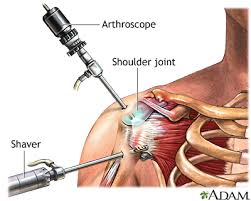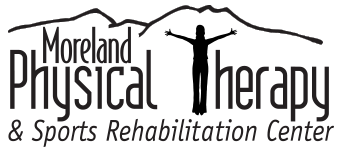Arthroscopy surgery and the shoulder
This week I thought it would be interesting to switch the subjects a little bit and talk more about surgical procedures. I am currently working at an orthopedic surgeons clinic and so I am around a lot of patients who are candidates for surgery. You can get surgery pretty much on any body part which makes the topic of ‘surgery’ very vast, so lets focus in on the shoulder; and specifically, arthroscopy surgery. You wonder what that is? Arthroscopy allows your doctor to see and work inside your shoulder through a very small incision using an arthroscope, which is a long, thin instrument with a light at the end. This instrument is used to move inside the joint and the images show up on a video screen during surgery. Arthroscopy surgery is beneficial to the patient as it reduces recovery time due to the the small incisions. There are many complaints of the shoulder that can be fixed or greatly improved by arthroscopy surgery.

- Shoulder Impingement: Impingement in the shoulder is exactly what it sounds like. It is when there is a lot of compression of the joint resulting in pain and discomfort. This can commonly be caused by overuse or repetitive overhead movements. Other common names for impingement can be bursitis or tendonitis. In a shoulder arthroscopy, the bursa can be removed or bone can be trimmed down to create more room in the shoulder so there is less irritation and inflammation, as well as relieving pressure in the shoulder.
- Rotator Cuff Tear: A rotator cuff can be torn due to many different types of activities; sometimes repetitive movements (throwing a baseball) or even one sudden movement (stopping yourself going down a steep slope snowboarding). A rotator cuff tear is one of the most common shoulder injury diagnosis’ and it can cause loss of range of motion, pain and weakness. Arthroscopy surgery to repair the rotator cuff will often include trimming and/or re-attaching the tendons of the rotator cuff (a group of muscles).
- Stretched Capsule: The capsule in your shoulder keeps the humeral head firmly in place. When this becomes stretched out, the bone can move out of the joint causing excessive subluxation of the shoulder joint. This, as it sounds, is not good. During arthroscopy surgery, this capsule is tightened and sutured in place with surgical tacks. This keeps the humeral head centered and not as easily dislocated.
- Torn Labrum: When the labrum is torn in the shoulder you can sometimes feel the bone is catching on something every time you move it. With a torn labrum, your shoulder can often slip out of place and dislocate. During arthroscopy, the labrum is reattached to the glenoid with anchors. After this surgery the shoulder feels tight in its place and is more stable.Torn Labrum: When the labrum is torn in the shoulder you can sometimes feel the bone is catching on something every time you move it. With a torn labrum, your shoulder can often slip out of place and dislocate. During arthroscopy, the labrum is reattached to the glenoid with anchors. After this surgery the shoulder feels tight in its place and is more stable.
- Last but not least, Arthritis: Arthritis is common and unfortunately is something you may deal with as you age. Your joint cartilage is damaged as time goes on and as this deterioration begins, so does the pain. During arthroscopy surgery, bone may be shaped or shaven down to promote new, healthy cartilage growth. This is very beneficial to many who suffer with severe pain from arthritis at a young age. This surgery is fairly easy to recover from and the patient can be pain-free instantaneously.
Arthroscopy surgery is definitely plausible for many shoulder injuries. It is also something worth trying before you attempt a shoulder replacement. The benefits include a shorter recovery time and decreased risk of infection. The cost can also be much more reasonable.
